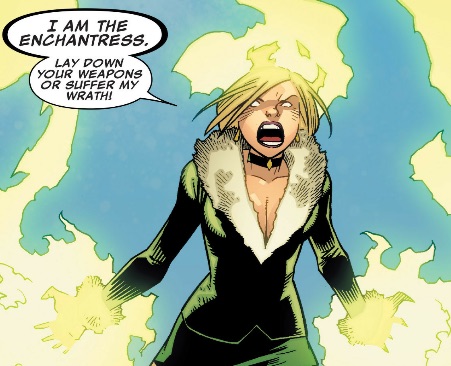Now That Sylvie’s Back in ‘Loki,’ Here’s a Refresher on Her Character

Season 1 of Loki introduced a new anti-hero to the Marvel Cinematic Universe: Sylvie Laufeydottir (Sophia Di Martino), Goddess of Mischief. Now, Sylvie is back in Loki season 2. If you’re jumping into Loki without having seen season 1 (bold move!) or if you’re wondering about her character’s origins in the Marvel comics, here’s what you need to know!
Sylvie in Loki on Disney+

Spoilers for Loki seasons 1 and 2 ahead!
Sylvie was first introduced in Loki season 1 as a variant of Loki from another reality. In season 1, we learn that Sylvie spent her childhood on Asgard, until she was arrested by the Time Variance Authority, and her timeline was erased from existence.
We don’t know why exactly Sylvie was arrested—only that when it happened, she was playing with toy Valkyries. Some fans have speculated that it was Sylvie’s interest in heroism instead of villainy that caused her timeline to diverge. Whatever the cause, Sylvie is forced to grow up on the run from the TVA, hiding in apocalypses throughout the timeline while plotting her revenge. While trying to take down the TVA, Sylvie uses her signature power of enchantment, a form of mind control in which she can see other people’s memories and even possess their bodies.
After teaming up with Loki in season 1, Sylvie eventually accomplishes her life’s goal: killing He Who Remains, the secret head of the TVA. However, Sylvie also seems to fall in love with Loki, sparking the creation of yet another new timeline. When we last see her in the season 1 finale, she’s crumpled on the floor of the Citadel at the End of Time, crying and alone.
Cut to Loki season 2. Sylvie walks through a time door to Broxton, Oklahoma 1982, in search of a meal at McDonald’s after killing He Who Remains. Once there, she looks at the happy couples and families around her and realizes that now she can live her life however she wants. In episode 2, we learn that she’s now an employee at McDonald’s, seemingly enjoying the simple life she never got to have until Loki shows up.
Sylvie’s origins in Marvel comics

Sylvie isn’t original to the MCU. Like most other MCU characters, she has her origins in the comics. However, Sylvie isn’t just one character in the Marvel comics universe. Instead, she’s inspired by three different characters: Sylvie Lushton, Amora the Enchantress, and Lady Loki.
Sylvie Lushton, in the comics, is a human woman born in—wait for it—Broxton, Oklahoma. When she wakes up one morning with magical powers, she styles herself after Amora the Enchantress and tries to join the Avengers. However, it’s eventually revealed that Loki gave Sylvie her powers, and might have even created her from scratch.
Amora, for her part, is an Asgardian sorceress with a long and complicated history, and the original character to hold the title Enchantress (not to be confused with DC’s own Enchantress). However, it looks like Sylvie will be taking on the role of Enchantress in the MCU. Sorry, Amora fans.
Finally, there’s Lady Loki. In the comics, Lady Loki isn’t a separate character from Loki—she and the male/genderfluid Loki are the same character. Loki has the ability to switch genders at will, leading them to appear as male, female, and nonbinary in different storylines. That’s not to say Lady Loki never takes on her own persona, though. In Thor and Loki: Double Trouble, she’s a multiversal variant of Loki, with the Mighty Thor as her sister.
Criticism of Sylvie’s character in Loki
Sylvie’s character in the MCU has garnered criticism: some of it fair, and some of it less so.
Some fans have pointed out that Marvel’s handling of Sylvie and Loki is a form of genderfluid erasure. In Loki’s arrest record at the TVA, we see that his gender is listed as “fluid.” This seems to indicate that he has the same gender-shifting ability as his comics counterpart. However, the series reveals that Sylvie represents the “genderfluid” aspect of Loki’s character, with Loki himself even expressing surprise at one point that one of his variants could be a woman.
There has also been heated criticism of Sylvie’s relationship with Loki, with viewers denouncing it as “selfcest” and thus morally wrong. However, since loving one’s multiversal variant isn’t possible in reality—and since Loki and Sylvie are both consenting adults—trans theorist Julia Serano has pointed out that people’s anger and disgust at the relationship might contain some underlying transphobia.
What’s next for Sylvie?
Sylvie may want to live her life on her branched timeline, but we know that the TVA isn’t finished with her yet. What will she get up to next, especially since she still has He Who Remains’ tempad? Only time—and future episodes of Loki season 2—will tell.
(featured image: Disney+)
Have a tip we should know? [email protected]
